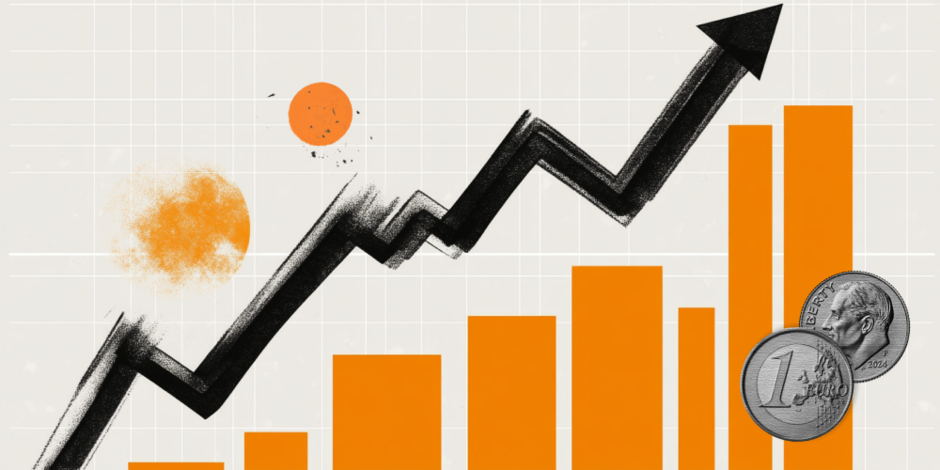EUR/USD weakens below 1.0900 on trade tensions
- EUR/USD trades in negative territory around 1.0880 in Thursday’s Asian session.
- The growing trade war between the US and EU undermines the shared currency.
- Investors will closely watch the US February PPI and the weekly Initial Jobless Claim data, which are due later on Thursday.

The EUR/USD pair loses ground to around 1.0880 during the Asian trading hours on Thursday. The escalating trade tension between the United States and the European Union (EU) exerts some selling pressure on the Euro (EUR) against the Greenback. Traders will take more cues from the US February Producer Price Index (PPI) and the weekly Initial Jobless Claim data, which are due later on Thursday.
US President Donald Trump said the US would respond to the EU’s countermeasures against his new 25% tariffs on steel and aluminum, raising the risk of further escalation in his global trade war. The European Commission announced retaliatory tariffs Wednesday, saying that its tariffs would apply to US goods worth up to 26 billion euros ($28.4 billion) and cover a wide variety of items, including boats, bourbon, and motorbikes. This measure would take effect on April 1, and a second set of countermeasures expected in mid-April.
However, the downside for the major pair might be capped amid the fear that Trump’s protectionism will push the US economy into recession, weighing on the USD.
"We were also going to get an inflation update, which we did, and inflation is still pretty sticky and it came lighter than expected. I think it was a little bit of a relief for the marketplace, so it improved sentiment. But sentiment is on a very short leash and it can change so quickly based on the headline risks,”said Amarjit Sahota, executive director at Klarity FX in San Francisco.
(This story was corrected on March 13 at 13:51 GMT to say that US PPI and weekly Initial Jobless Claim data are due later on Thursday, not Wednesday.)
Euro FAQs
The Euro is the currency for the 19 European Union countries that belong to the Eurozone. It is the second most heavily traded currency in the world behind the US Dollar. In 2022, it accounted for 31% of all foreign exchange transactions, with an average daily turnover of over $2.2 trillion a day. EUR/USD is the most heavily traded currency pair in the world, accounting for an estimated 30% off all transactions, followed by EUR/JPY (4%), EUR/GBP (3%) and EUR/AUD (2%).
The European Central Bank (ECB) in Frankfurt, Germany, is the reserve bank for the Eurozone. The ECB sets interest rates and manages monetary policy. The ECB’s primary mandate is to maintain price stability, which means either controlling inflation or stimulating growth. Its primary tool is the raising or lowering of interest rates. Relatively high interest rates – or the expectation of higher rates – will usually benefit the Euro and vice versa. The ECB Governing Council makes monetary policy decisions at meetings held eight times a year. Decisions are made by heads of the Eurozone national banks and six permanent members, including the President of the ECB, Christine Lagarde.
Eurozone inflation data, measured by the Harmonized Index of Consumer Prices (HICP), is an important econometric for the Euro. If inflation rises more than expected, especially if above the ECB’s 2% target, it obliges the ECB to raise interest rates to bring it back under control. Relatively high interest rates compared to its counterparts will usually benefit the Euro, as it makes the region more attractive as a place for global investors to park their money.
Data releases gauge the health of the economy and can impact on the Euro. Indicators such as GDP, Manufacturing and Services PMIs, employment, and consumer sentiment surveys can all influence the direction of the single currency. A strong economy is good for the Euro. Not only does it attract more foreign investment but it may encourage the ECB to put up interest rates, which will directly strengthen the Euro. Otherwise, if economic data is weak, the Euro is likely to fall. Economic data for the four largest economies in the euro area (Germany, France, Italy and Spain) are especially significant, as they account for 75% of the Eurozone’s economy.
Another significant data release for the Euro is the Trade Balance. This indicator measures the difference between what a country earns from its exports and what it spends on imports over a given period. If a country produces highly sought after exports then its currency will gain in value purely from the extra demand created from foreign buyers seeking to purchase these goods. Therefore, a positive net Trade Balance strengthens a currency and vice versa for a negative balance.
Author

Lallalit Srijandorn
FXStreet
Lallalit Srijandorn is a Parisian at heart. She has lived in France since 2019 and now becomes a digital entrepreneur based in Paris and Bangkok.

















